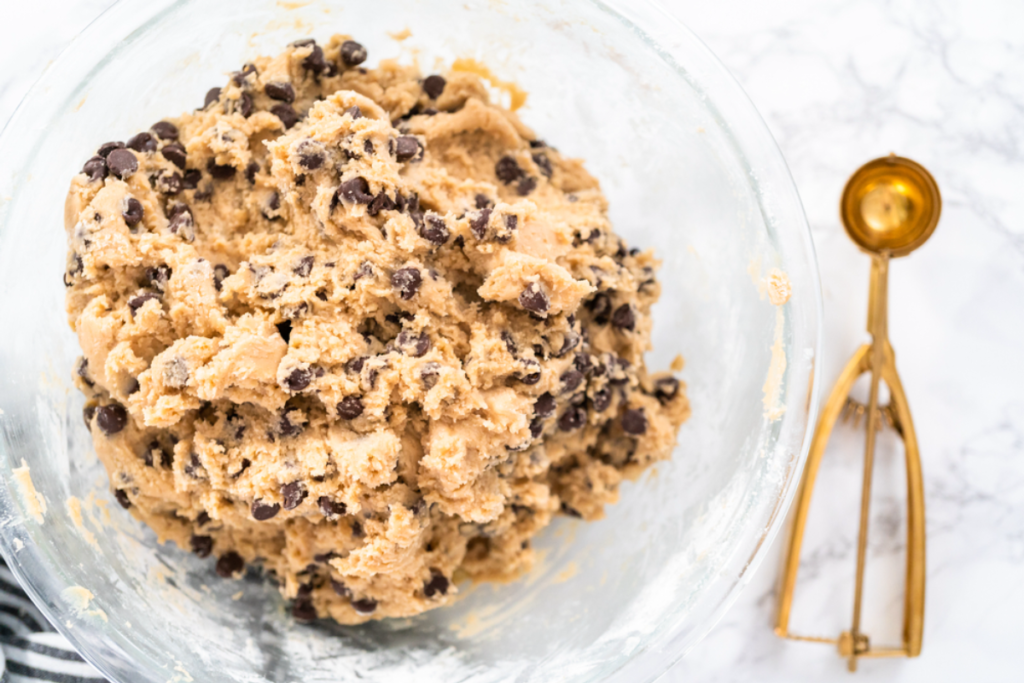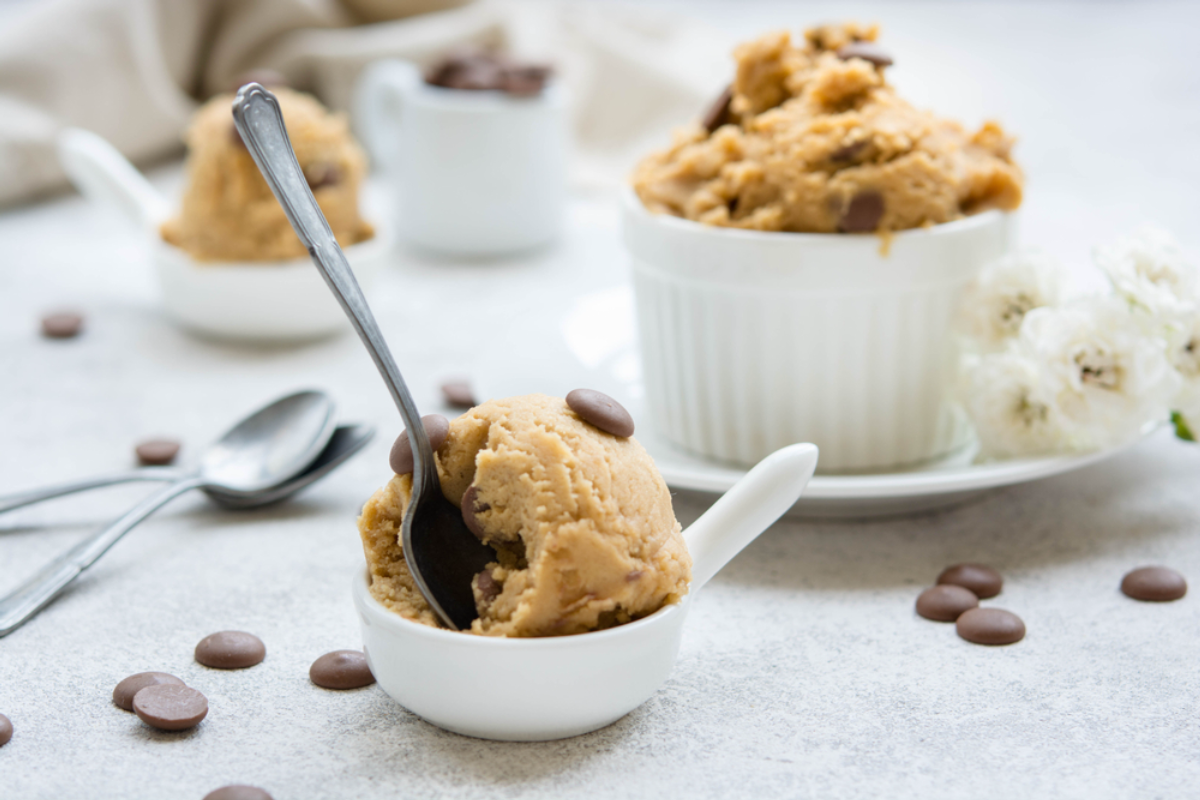Making cookie dough at home is one of life’s simplest pleasures. Whether you love to sneak a taste of the dough before baking or you’re in search of a fun recipe to enjoy with friends and family, a good cookie dough recipe is a must-have in your culinary collection. This article will guide you through the perfect way to make cookie dough, tips for variations, storage advice, and much more.
But what makes cookie dough so irresistible? The sweet, slightly gritty texture, the rich combination of butter and sugar, and the chunks of chocolate chips all come together to create a mouthwatering treat. Whether you’re baking the dough into warm, chewy cookies or just enjoying it straight from the bowl (without the eggs, of course!), there’s no denying the appeal of cookie dough.
This comprehensive guide will show you everything you need to know about making a classic cookie dough recipe at home. You’ll learn about key ingredients, step-by-step instructions, tips for making variations, and how to store your dough for later enjoyment. Without further ado, let’s dive into the world of cookie dough.
Key Ingredients for a Classic Cookie Dough Recipe
A perfect cookie dough recipe begins with the right ingredients. The balance of these components is what gives the dough its characteristic taste and texture.
1. Butter
Butter is a key component in any cookie dough recipe. It provides richness and helps create that signature soft texture. For the best results, make sure to use unsalted butter at room temperature. Soft butter blends more easily with sugar, creating a smoother dough. Using unsalted butter allows you to control the overall saltiness of the dough.
2. Sugar (Brown and White)
Sugar is essential for sweetness and contributes to the texture of your cookie dough. A combination of brown and white sugar is commonly used in most cookie dough recipes. Brown sugar adds moisture and a deeper, caramel-like flavor, while white sugar helps create that crispy edge once the cookies are baked. The ideal cookie dough recipe balances both sugars for the perfect texture.
3. Vanilla Extract
Vanilla extract might seem like a small addition, but it plays a big role in enhancing the overall flavor of your cookie dough recipe. Just a teaspoon or two can make all the difference, bringing out the sweetness of the sugar and the richness of the butter.
4. Flour
Flour is the structure of your cookie dough. The amount of flour you use will impact the thickness and chewiness of your dough. Most cookie dough recipes use all-purpose flour, which provides the perfect balance between softness and chewiness.
5. Chocolate Chips
What would cookie dough be without chocolate chips? Adding semisweet chocolate chips to your dough makes every bite a rich, chocolatey experience. You can also experiment with different types of chocolate chips, such as dark or white chocolate, to customize your cookie dough recipe.
6. Milk
Milk is an optional ingredient in some cookie dough recipes, but it can help soften the dough if it’s too thick. A tablespoon or two should be enough to achieve the desired consistency.
7. Baking Soda
Baking soda is a leavening agent that helps your cookies rise when they’re baked. It also contributes to the golden-brown color of baked cookies.
8. Salt
Adding a pinch of salt enhances the sweetness and balances out the flavor of the cookie dough. It’s a simple but crucial ingredient in any cookie dough recipe.

How to Make Cookie Dough: Step-by-Step Instructions
Now that we’ve covered the essential ingredients, let’s get into the process of making cookie dough. Follow these steps, and you’ll have a delicious batch of cookie dough ready in no time.
Step 1: Gather Your Ingredients
Before you start mixing, make sure you have all your ingredients ready. Measure out 1 cup of unsalted butter (softened), 3/4 cup of brown sugar, 1/2 cup of granulated sugar, 1 teaspoon of vanilla extract, 2 1/4 cups of all-purpose flour, 1/2 teaspoon of baking soda, a pinch of salt, 2 tablespoons of milk (optional), and 1 1/2 cups of chocolate chips.
Step 2: Cream the Butter and Sugar
In a large bowl, cream together the softened butter, brown sugar, and white sugar. Use a hand mixer or stand mixer to blend the ingredients until they’re light and fluffy. This step is crucial in making your cookie dough recipe smooth and lump-free.
Step 3: Add Vanilla Extract
Next, add the vanilla extract to the butter and sugar mixture. Stir well to combine, making sure the vanilla is evenly distributed throughout the dough.
Step 4: Mix in the Dry Ingredients
In a separate bowl, whisk together the flour, baking soda, and salt. Gradually add the dry ingredients to the butter mixture, mixing until fully incorporated. If the dough feels too thick, add a tablespoon or two of milk to soften it.
Step 5: Fold in the Chocolate Chips
Finally, gently fold in the chocolate chips. Make sure they’re evenly distributed throughout the dough, so every bite is packed with chocolatey goodness.
Step 6: Chill the Dough (Optional)
If you prefer a thicker cookie or just want to prepare the dough for baking later, chill it in the refrigerator for about 30 minutes. Chilling the dough allows the flavors to develop and prevents the cookies from spreading too much in the oven.
Step 7: Enjoy or Bake!
At this point, your cookie dough is ready to eat! If you plan to bake cookies, preheat your oven to 350°F (175°C). Roll the dough into small balls and place them on a baking sheet lined with parchment paper. Bake for 10–12 minutes, or until the edges are golden brown but the center remains soft.
Creative Variations for Your Cookie Dough Recipe
One of the best things about a classic cookie dough recipe is its versatility. You can easily modify the recipe to suit your personal taste or dietary preferences. Here are some fun variations you can try.
1. Peanut Butter Cookie Dough
For a peanut butter twist, simply replace half of the butter with peanut butter. This will give your dough a nutty flavor and a slightly denser texture. You can even add peanut butter chips instead of chocolate chips for a full peanut butter experience.
2. Double Chocolate Cookie Dough
Chocolate lovers, this one’s for you! Add 1/4 cup of cocoa powder to your dry ingredients and use chocolate chunks instead of chips for an ultra-rich, double chocolate cookie dough recipe. This version is sure to satisfy any chocolate craving.
3. Oatmeal Raisin Cookie Dough
For a healthier spin, swap out some of the flour for rolled oats. Add a handful of raisins and a pinch of cinnamon to your dough for a cozy, oatmeal raisin cookie dough recipe that’s perfect for fall.
4. M&M Cookie Dough
For a fun, colorful twist, replace the chocolate chips with M&M candies. The vibrant colors and crispy candy coating add a playful element to your cookie dough recipe. Kids will love this variation!
5. Sugar Cookie Dough
If you prefer a simpler cookie dough recipe, leave out the chocolate chips entirely. This creates a basic sugar cookie dough that you can roll out and cut into shapes for decorating. You can also add sprinkles to the dough for a festive touch.
Tips for Storing Cookie Dough
Whether you want to make your cookie dough ahead of time or you’ve made a big batch and can’t eat it all at once, proper storage is key. Here’s how to store your cookie dough to keep it fresh.
1. Refrigeration
If you plan to use your cookie dough within a few days, simply cover the dough with plastic wrap and store it in the refrigerator. Chilled dough can last for up to 5 days.
2. Freezing Cookie Dough
For longer storage, cookie dough freezes beautifully. Roll the dough into individual balls and place them on a baking sheet. Freeze the dough balls until they’re firm, then transfer them to an airtight container or freezer bag. Frozen cookie dough can last up to 3 months.
3. Baking from Frozen
You can bake cookie dough directly from the freezer without needing to thaw it. Just add an extra minute or two to the baking time. This method is perfect for when you want fresh cookies on a whim!
Cookie Dough Recipe FAQ
Can I Eat Raw Cookie Dough?
Yes! The cookie dough recipe shared in this article is egg-free, making it safe to eat raw. Just make sure to heat-treat the flour to kill any potential bacteria before using it in your recipe.
Can I Make a Vegan Cookie Dough Recipe?
Absolutely! To make a vegan cookie dough recipe, use plant-based butter and a dairy-free milk alternative. You can also substitute the chocolate chips with vegan-friendly chocolate.
What Can I Do if My Cookie Dough is Too Sticky?
If your dough is too sticky, it’s likely because there’s too much moisture. Try adding a tablespoon of flour at a time until the dough reaches the right consistency.
How Can I Make Gluten-Free Cookie Dough?
To make your cookie dough recipe gluten-free, simply replace the all-purpose flour with a gluten-free flour blend. Make sure the other ingredients, such as chocolate chips, are also gluten-free.
How Long Can I Store Cookie Dough in the Freezer?
Frozen cookie dough can last up to 3 months. Be sure to label your freezer bag with the date, so you know when it was made.
Conclusion
Mastering a classic cookie dough recipe opens up a world of indulgent possibilities. With just a handful of common ingredients like butter, sugar, flour, and chocolate chips, you can create a delicious treat that can be enjoyed in countless ways. Whether you love to bake warm, chewy cookies or prefer to savor the dough itself, this recipe provides a versatile foundation for both. From adding peanut butter or oatmeal to creating fun variations like double chocolate or M&M cookie dough, the opportunities for customization are endless.
Additionally, the process is simple and satisfying, allowing bakers of all skill levels to enjoy making cookie dough at home. Don’t forget that storing cookie dough is also incredibly easy, whether you choose to refrigerate it for a few days or freeze it for future use. No matter how you decide to enjoy your cookie dough—baked, frozen, or raw—this recipe is sure to become a staple in your kitchen. So, gather your ingredients, experiment with flavors, and treat yourself to the sweet, comforting goodness of homemade cookie dough. After all, there’s nothing quite like the joy of indulging in this timeless treat!
